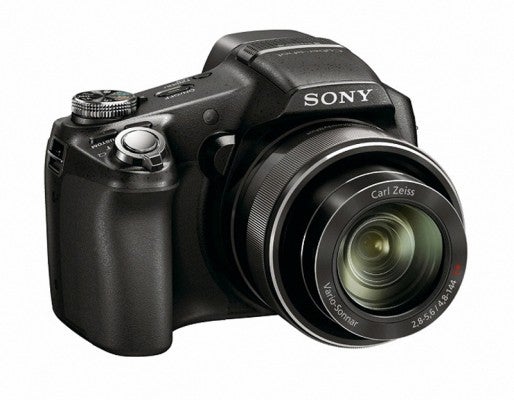As the superzoom market continues to hot up, Sony’s latest HX100V dips its oar into the 30x ultra-zoom sector. With unique features such as GPS (Global Positioning Satellite), does it have the goods to be the very best superzoom out there? The What Digital Camera Sony Cyber-shot HX100V review takes a look…
Sony Cyber-shot HX100V Review
Image Quality
Sony Cyber-shot HX100V review – Image Quality
As seems to be the trend of late, image sensors continue to cram lots of megapixels onto their relatively small forms. The Sony HX100V is no exception, with a hefty 16.2MP found on its 1/2.3in-sized CMOS sensor. The wiring has been moved to the back for a back-lit construction to help light pass directly. However, techno jargon put aside for one moment, and the fact is that the inclusion of so many megapixels in a small area doesn’t always help image quality for the better. Indeed it can hinder it by preventing a good amount of light from being able to reach each sensor node. The HX100V’s final images are fine, yet when viewed at 100% (native pixel-to-pixel size), even the lowest ISO settings show signs of ‘smearing’ and JPEG processing artifacts which may not convey the fullest detail.
ISO 100-200 are the most detailed sensitivities, with ISO 400 dropping down a notch. From ISO 800 and beyond there’s a notable drop in resolved detail and edge definition becomes smeary. However colour noise is seldom an issue due to well-performing image noise reduction. Indeed, even at ISO 3200, colour rendition is still accurate and blacks are still black, but the drop-off in edge detail and smeary-looking shots won’t cut it for those hyper critical about quality.
In terms of exposure we were impressed by the HX100V’s speed of adapting between varying zoom levels and taking on board complex exposures. Whether using natural or artificial light, exposures came across balanced and of realistic colour.

But let’s put this in perspective: A superzoom is never going to be like a DSLR, in that the sensor is far smaller and not able to resolve the same level of detail – yet it’s a fair balance of size to quality ratio with a long-reaching lens. The HX100V is exactly this. It delivers compact-like quality but has a whacking great lens that’s great for getting in on the action. If the sensor was physically any larger then so too would the camera body in order to accommodate the optics able enough to provide the necessary light circle for the sensor. So little could change as far as the HX100V is concerned – but if that sensor was a 10MP or 12MP version it most likely would have produced better results still.

If a superzoom is an absolute must then there are a few choices out there – the HX100V performs extremely well, if not better than any other, but it’s the Fuji HS20 (at its 8MP EXR setting) that pips it to the post in terms of low-ISO image quality in real world images.
Furthermore the HX100V can only capture JPEG files, it does not have the facility to capture Raw files. However, all manual modes offer three-step adjustment for Color Saturation, Contrast, Sharpness and Noise Reduction – it’s a helpful tool (though you’ll need to look at results on screen to tweak them into your ideal settings) but doesn’t quite compensate for having that Raw file in hand.





